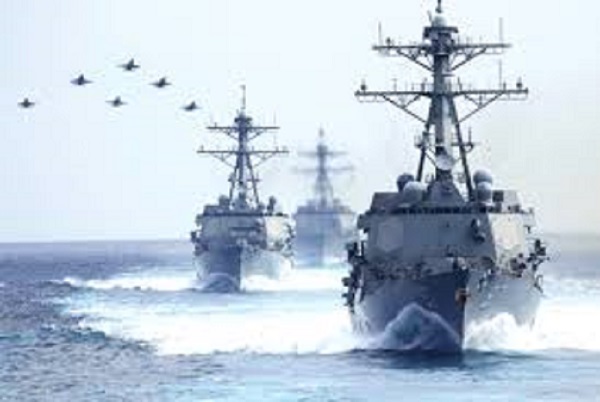On October 19, the Office of Naval Research posted a broad agency announcement for electronic warfare technology. Responses are due by 4:00 p.m. Eastern on February 28, 2019.
The proposed topic will explore and exploit the technical opportunities for discovery and invention in the area of Electronic Warfare (EW). The goal of EW is to control the Electromagnetic Spectrum (EMS) by exploiting, deceiving, or denying enemy use of the spectrum while ensuring its use by friendly forces. To that end, the Office of Naval Research (ONR) EW Discovery and Invention (D&I) program invests in Science and Technology (S&T) initiatives that will provide naval forces (including Navy and Marine Corps) with improved threat warning systems; Electronic warfare Support (ES); decoys and countermeasures against weapon tracking and guidance systems; Electronic Attack (EA) against adversary Command, Control, Communications, Computers, Intelligence, Surveillance, and Reconnaissance (C4ISR); and Electronic Protection (EP) of our own weapons and C4ISR from intentional and unintentional interference.
ONR Code 312 Electronic Warfare (312EW) seeks proposals to develop and demonstrate technologies for the next generation systems in electronic warfare. White papers and subsequent proposals should address technology developments in one or more of the following Research Opportunity Technical Areas (TA) 1-4.
Technical Area 1 (TA1): Alternative Computational Approaches Applied to EW
Technical Area 2 (TA2): Compact, Efficient, Beam-Agile Transmitters
Technical Area 3 (TA3): Compact, Efficient, EO/IR Transmitters
Technical Area 4: Component Technologies for Innovative Distributed EW
Historically, the Naval EW community has had the advantage of leveraging large, high power platforms such as the Navy’s surface ships to support robust Electronic Warfare capabilities. The advance of adversary intelligence, surveillance and reconnaissance (ISR) capabilities across the spectrum and the proliferation of autonomous, unmanned platforms such as UAV’s (for both adversary and friendly forces) has naturally led to the development of operational concepts that emphasize heavy signal processing and distributed capabilities realized by higher numbers of both conventional and less capable platforms. This move to data intensive and distributed operations has resulted in a trade-off of capabilities based on size, weight and power (SWAP) limitations. This Special Notice seeks to identify opportunities to develop technologies that overcome the limitations on electronic warfare capabilities driven by SWAP constraints.
Full information is available here.
Source: FedBizOpps








